Practical magick is all about the manipulation of probabilities. In order to accomplish any particular goal, the most effective path is to (A) take all possible mundane steps towards your objective and (B) use magick to further increase your likelihood of success beyond what can be done by mundane steps alone. While it may sound trite and New-Agey to talk about this latter effect being produced by the interaction of consciousness and the quantum realm, the idea gets touted so often because if magical operations can influence probability at all, that's pretty much the only way they could possibly work.
Parapsychologists of the last century managed to exclude every known form of energy as responsible for psychic effects. There is some ongoing research in China that suggests the healing effects of Qigong might be related to infrasonic waves, but otherwise the entire electomagnetic spectrum has been ruled out by methods such as testing psychics in Faraday cages and other similar methods. Furthermore, Princeton's PEAR group found that subjects could exert a tiny but measurable and statistically significant influence on quantum diodes, random number generators that were themselves isolated from all forms of electromagnetic radiation.
The reason everyone is sick to death of quantum physics being used as an explanation for paranormal phenomena is one of simple overreach. The fact that quantum effects are probabilistic in no way proves the existence of magick, psychism, or any other such concept. In fact, there are plenty of ways in which a non-paranormal universe could incorporate quantum uncertainty in a completely reasonable manner, and most quantum physicists interpret the data along such lines. The PEAR studies found that the influence of consciousness on individual diodes was practically negligible (.01% to .05%, depending upon the subject).
So the key question with regard to magick and quantum effects is not one of proof, but rather mode of action. If magical probability manipulation can occur, then it must act in some way upon matter at the quantum level. What many of us find so bothersome about quantum explanations is when they keep being invoked as a justification for the if rather than as a mechanism for the then. It's even worse in cases where the supposed "proof" gets all the attention and the mechanism portion is completely ignored. Case in point - the film What The Bleep Do We Know? from 2004. Essentially, the film's argument is that the universe is constructed of thoughts rather than substance and we all create our own realities - because quantum physics! That's it, the whole explanation. Not only that, many of the physicist who appear in the film later complained that their comments were taken out of context in order to support the film's premise.
One of the few scientists looking into the explanation side of this equation is British biologist Rupert Sheldrake. Because of his unique position Sheldrake is often cited by the same New Agers who spout off about quantum physics proving magick, but it should be noted that his actual thinking on the subject is much more rigorous than that of the folks who made What The Bleep? Importantly, he freely admits that there's nothing in quantum physics that proves such phenomena exist. In fact, in the context of Sheldrake's work that's the whole point. In Morphic Resonance, Sheldrake lays out the basic tenets of a model involving what he calls probability structures. He hypothesizes that, essentially, the space in which probability waves opeate is not uniformly flat but rather contains structures that grow over time. The upshot of these structures is that to a limited degree nature acquires "habits" in which past results can affect present outcomes.
Whereas the current conception of quantum physics proves nothing regarding magick, a model like Sheldrake's might if it could be verified experimentally. The problem there is that quantum uncertainty gets in the way of direct observation. About a year ago it was announced that by using "weak measurements" it was possible to make measurements at the quantum level while disturbing the state of the system to a lesser degree than was previously believed possible, but even with those methods observation of probability structures of any sort remains a very difficult problem. The only empirical evidence we're likely to obtain is from indirect observation of a probability structure's effects, and in fact Sheldrake offers some suggestions for constructing such experiments that in my opinion should be taken more seriously than they have been so far.
So what I'm going to do here is engage in a bit of a thought experiment. Let's say that what you do when you cast a spell is that you create a probability structure similar to those hypothesized by Sheldrake. This structure in turn interacts with the original probability of the event that you are trying to influence, leading to a change in the likelihood of the desired outcome. This diagram shows the basic idea.
The green line shows the original distribution of the probability function for the location of a particle in space, with the peaks labeled A, B, and C the most likely outcomes with the most common of those three being C. The red line shows a magical influence targeting B, simultaneously increasing the likelihood of B and decreasing the likelihood of A and C. The purple line shows the combined distribution, in which all three peaks are still present but B has become the most likely of the three.
When trying to apply this sort of analysis to a magical operation, though, what you wind up with is something of a mess. The reason for that is simple - the sheer number of particles involved in any macrocosmic system is astronomical. Sometimes models of magick get bogged down in this, trying to work out how each particle gets influenced by the operation to produce the final result. I think that's a mistake, akin to trying to understand a magnetic field by postulating that the magnetism itself must somehow know what each particle is, whether or not it should be influenced, and which direction it should move.
What those models really need is the concept of a field, similar to how we represent the principle forces of nature such as electromagnetism and gravity. Within probability space, probability structures may be able to provide just such an organizing principle. And that, in a roundabout way, gets me to a recent breakthrough in quantum mathematics. The image at the top of this post is a rendering of an amplituhedron, a mathematical object that greatly simplifies calculating the interaction of particle wavefunctions across quantum systems.
Locality has been challenged for some time now by experiments involving quantum entanglement, which seems to show some sort of action at a distance following particle interaction. There's some debate over whether or not entanglement is more mathematical quirk than physical principle, but effects like quantum teleportation seem to suggest that the "physical principle" side is starting to make more sense. And if unity is also suspect, that may imply probability space does in fact contain some sort of structure rather than behaving as totally flat.
At this point, of course, it's all speculation, from Sheldrake's habits of nature to the magical influence itself. I'm not about to make the same mistake as the What The Bleep? folks, going off on an intellectual flight of fancy, then turning around and arguing that my unsupported hypothesizing somehow constitutes "proof." I will say that it feels like we're getting closer all the time to understanding how our universe works and the role paranormal effects may play in it, and that's a very good thing - whatever the result turns out to be.
Parapsychologists of the last century managed to exclude every known form of energy as responsible for psychic effects. There is some ongoing research in China that suggests the healing effects of Qigong might be related to infrasonic waves, but otherwise the entire electomagnetic spectrum has been ruled out by methods such as testing psychics in Faraday cages and other similar methods. Furthermore, Princeton's PEAR group found that subjects could exert a tiny but measurable and statistically significant influence on quantum diodes, random number generators that were themselves isolated from all forms of electromagnetic radiation.
The reason everyone is sick to death of quantum physics being used as an explanation for paranormal phenomena is one of simple overreach. The fact that quantum effects are probabilistic in no way proves the existence of magick, psychism, or any other such concept. In fact, there are plenty of ways in which a non-paranormal universe could incorporate quantum uncertainty in a completely reasonable manner, and most quantum physicists interpret the data along such lines. The PEAR studies found that the influence of consciousness on individual diodes was practically negligible (.01% to .05%, depending upon the subject).
So the key question with regard to magick and quantum effects is not one of proof, but rather mode of action. If magical probability manipulation can occur, then it must act in some way upon matter at the quantum level. What many of us find so bothersome about quantum explanations is when they keep being invoked as a justification for the if rather than as a mechanism for the then. It's even worse in cases where the supposed "proof" gets all the attention and the mechanism portion is completely ignored. Case in point - the film What The Bleep Do We Know? from 2004. Essentially, the film's argument is that the universe is constructed of thoughts rather than substance and we all create our own realities - because quantum physics! That's it, the whole explanation. Not only that, many of the physicist who appear in the film later complained that their comments were taken out of context in order to support the film's premise.
One of the few scientists looking into the explanation side of this equation is British biologist Rupert Sheldrake. Because of his unique position Sheldrake is often cited by the same New Agers who spout off about quantum physics proving magick, but it should be noted that his actual thinking on the subject is much more rigorous than that of the folks who made What The Bleep? Importantly, he freely admits that there's nothing in quantum physics that proves such phenomena exist. In fact, in the context of Sheldrake's work that's the whole point. In Morphic Resonance, Sheldrake lays out the basic tenets of a model involving what he calls probability structures. He hypothesizes that, essentially, the space in which probability waves opeate is not uniformly flat but rather contains structures that grow over time. The upshot of these structures is that to a limited degree nature acquires "habits" in which past results can affect present outcomes.
Whereas the current conception of quantum physics proves nothing regarding magick, a model like Sheldrake's might if it could be verified experimentally. The problem there is that quantum uncertainty gets in the way of direct observation. About a year ago it was announced that by using "weak measurements" it was possible to make measurements at the quantum level while disturbing the state of the system to a lesser degree than was previously believed possible, but even with those methods observation of probability structures of any sort remains a very difficult problem. The only empirical evidence we're likely to obtain is from indirect observation of a probability structure's effects, and in fact Sheldrake offers some suggestions for constructing such experiments that in my opinion should be taken more seriously than they have been so far.
So what I'm going to do here is engage in a bit of a thought experiment. Let's say that what you do when you cast a spell is that you create a probability structure similar to those hypothesized by Sheldrake. This structure in turn interacts with the original probability of the event that you are trying to influence, leading to a change in the likelihood of the desired outcome. This diagram shows the basic idea.
The green line shows the original distribution of the probability function for the location of a particle in space, with the peaks labeled A, B, and C the most likely outcomes with the most common of those three being C. The red line shows a magical influence targeting B, simultaneously increasing the likelihood of B and decreasing the likelihood of A and C. The purple line shows the combined distribution, in which all three peaks are still present but B has become the most likely of the three.
When trying to apply this sort of analysis to a magical operation, though, what you wind up with is something of a mess. The reason for that is simple - the sheer number of particles involved in any macrocosmic system is astronomical. Sometimes models of magick get bogged down in this, trying to work out how each particle gets influenced by the operation to produce the final result. I think that's a mistake, akin to trying to understand a magnetic field by postulating that the magnetism itself must somehow know what each particle is, whether or not it should be influenced, and which direction it should move.
What those models really need is the concept of a field, similar to how we represent the principle forces of nature such as electromagnetism and gravity. Within probability space, probability structures may be able to provide just such an organizing principle. And that, in a roundabout way, gets me to a recent breakthrough in quantum mathematics. The image at the top of this post is a rendering of an amplituhedron, a mathematical object that greatly simplifies calculating the interaction of particle wavefunctions across quantum systems.
The revelation that particle interactions, the most basic events in nature, may be consequences of geometry significantly advances a decades-long effort to reformulate quantum field theory, the body of laws describing elementary particles and their interactions. Interactions that were previously calculated with mathematical formulas thousands of terms long can now be described by computing the volume of the corresponding jewel-like “amplituhedron,” which yields an equivalent one-term expression.
“The degree of efficiency is mind-boggling,” said Jacob Bourjaily, a theoretical physicist at Harvard University and one of the researchers who developed the new idea. “You can easily do, on paper, computations that were infeasible even with a computer before.”
The new geometric version of quantum field theory could also facilitate the search for a theory of quantum gravity that would seamlessly connect the large- and small-scale pictures of the universe. Attempts thus far to incorporate gravity into the laws of physics at the quantum scale have run up against nonsensical infinities and deep paradoxes. The amplituhedron, or a similar geometric object, could help by removing two deeply rooted principles of physics: locality and unitarity.
“Both are hard-wired in the usual way we think about things,” said Nima Arkani-Hamed, a professor of physics at the Institute for Advanced Study in Princeton, N.J., and the lead author of the new work, which he is presenting in talks and in a forthcoming paper. “Both are suspect.”
Locality is the notion that particles can interact only from adjoining positions in space and time. And unitarity holds that the probabilities of all possible outcomes of a quantum mechanical interaction must add up to one. The concepts are the central pillars of quantum field theory in its original form, but in certain situations involving gravity, both break down, suggesting neither is a fundamental aspect of nature.
Locality has been challenged for some time now by experiments involving quantum entanglement, which seems to show some sort of action at a distance following particle interaction. There's some debate over whether or not entanglement is more mathematical quirk than physical principle, but effects like quantum teleportation seem to suggest that the "physical principle" side is starting to make more sense. And if unity is also suspect, that may imply probability space does in fact contain some sort of structure rather than behaving as totally flat.
At this point, of course, it's all speculation, from Sheldrake's habits of nature to the magical influence itself. I'm not about to make the same mistake as the What The Bleep? folks, going off on an intellectual flight of fancy, then turning around and arguing that my unsupported hypothesizing somehow constitutes "proof." I will say that it feels like we're getting closer all the time to understanding how our universe works and the role paranormal effects may play in it, and that's a very good thing - whatever the result turns out to be.














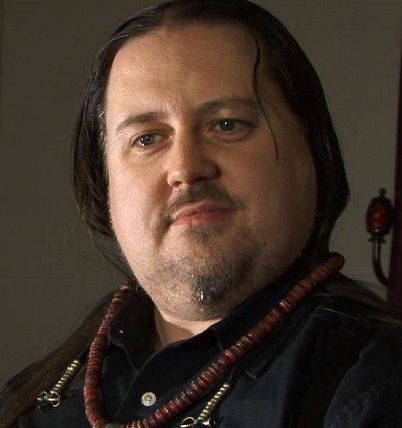

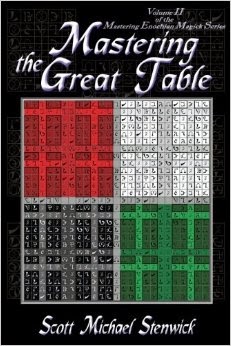

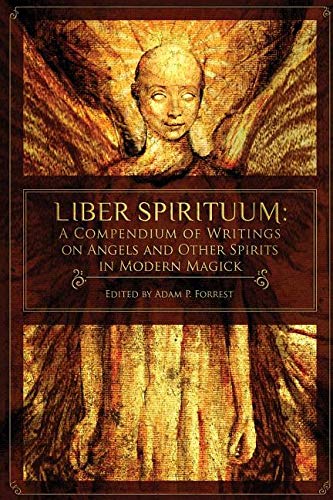
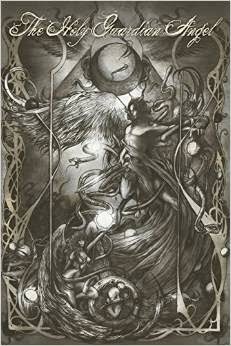

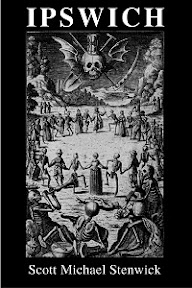
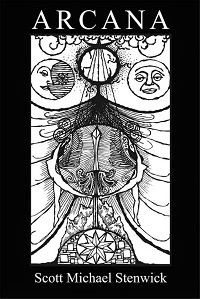

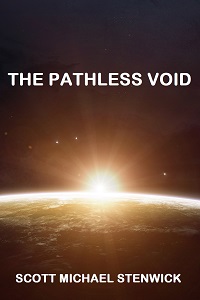

2 comments:
Unfortunately the article is behind a paywall (so you are limited to reading the summary), but here is a interesting take on what the probability function actually models:
http://www.scientificamerican.com/article.cfm?id=can-quantum-beyesnism-fix-paradoxes-quantum-mechanics
You know what? I somehow missed putting in a proper link to the article. I've added it for the amplutihedron one that I sampled now, and I don't think it has a paywall - at least, I don't see one on my home machine here.
Post a Comment